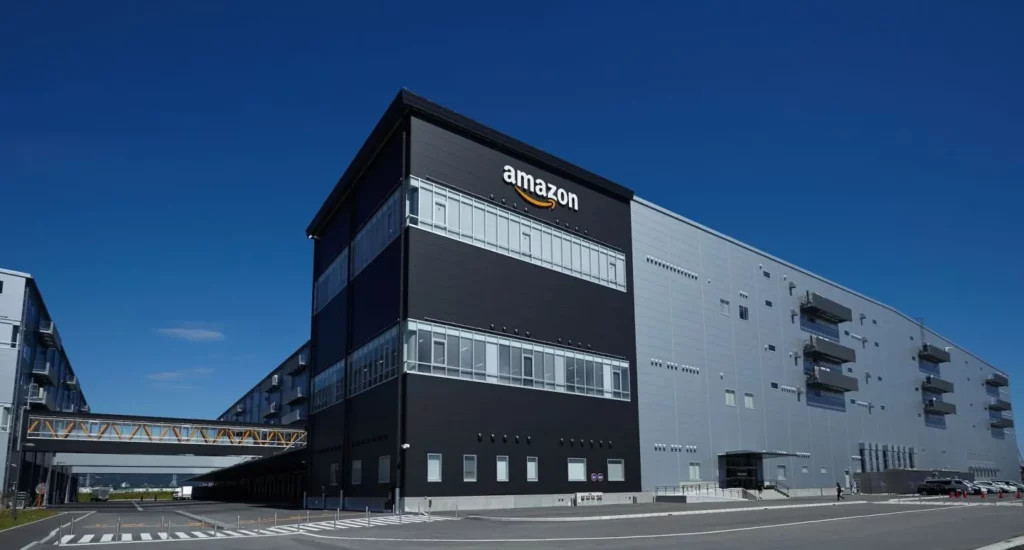Les nouveaux entrepôts d'Amazon sont confrontés à des coûts élevés, à des emplacements éloignés et à des défis opérationnels, notamment une explosion des stocks, ce qui impacte considérablement les vendeurs. Apprenez-en plus sur les enjeux et les implications.

Le réseau d'entrepôts d'Amazon aux États-Unis, en particulier les plus récents, est confronté à d'importants défis opérationnels. Des rapports récents de transitaires font état d'anomalies dans les réservations d'entrepôts, affectant des sites comme ONT8, LGB8, LAX9, SBD1, GRY2, FTW1, ABQ2 et PSC2. ABQ2 et PSC2, qui avaient connu de graves problèmes de stock le mois dernier, ont de nouveau connu des difficultés.
L'ampleur du problème
Les points ONT8, LGB8, ABQ2, PSC2 et SBD1 rencontrent tous des problèmes de réservation de cartes et de planchers, LGB8 risquant des rejets catégoriques. De plus, SBD1 et PSC2 ne disposent pas de zones dédiées aux planchers, tandis qu'ABQ2 ne dispose pas de zones dédiées aux palettes et au plancher. Ces perturbations impactent considérablement le bon fonctionnement de la logistique d'Amazon et représentent un défi pour les vendeurs qui dépendent de ces installations.
Un vendeur a récemment commenté la situation, qualifiant le nouvel entrepôt PSC2 de problématique. Amazon a ouvert plusieurs nouveaux entrepôts cette année, principalement sur la côte ouest, notamment MIT2, GFU3, XLG1, PSC2, ABQ2, FSD1, JOT1 et QXY5. Malgré l'objectif d'améliorer l'efficacité des livraisons et de résoudre les problèmes de stocks, les vendeurs ont qualifié ces nouveaux entrepôts de « déchets » en raison de leurs coûts élevés et de leur éloignement.
Préoccupations et commentaires du vendeur
Les vendeurs ont exprimé leurs inquiétudes quant aux coûts élevés liés à ces nouveaux entrepôts. Un vendeur de Shenzhen a indiqué que ses marchandises avaient été affectées à un nouvel entrepôt dans le nord de la Californie, ce qui a entraîné une augmentation des coûts. Bien que l'expansion d'Amazon vise à rationaliser les opérations, la charge financière pesant sur les vendeurs s'est alourdie.
De plus, les vendeurs rencontrent des difficultés lors de la création d'expéditions. De nombreux entrepôts inconnus sont apparus, et les transitaires peinent souvent à les localiser. Par conséquent, les vendeurs sont réticents à les visiter, mais leurs expéditions y sont souvent dirigées. Les articles standard sont particulièrement susceptibles d'être affectés à ces nouveaux emplacements.
Un vendeur, dont les expéditions ont été affectées à ces nouveaux entrepôts pendant plus de quinze jours, a exprimé sa frustration. Choisir cinq entrepôts gratuits entraîne souvent des affectations dans des régions éloignées et isolées, les premiers trajets prenant plus de deux mois. Une fois les marchandises arrivées, les vendeurs doivent faire face à des frais élevés pour la configuration et les défauts. Choisir trois entrepôts et être affecté aux nouveaux entrepôts entraîne des coûts importants, la seule option étant la livraison par carte.
L'impact des explosions d'entrepôts
La situation s'aggrave avec les explosions d'entrepôts. Ces incidents compliquent encore davantage la logistique et alourdissent la charge de travail des vendeurs. Les nouveaux entrepôts, déjà éloignés et coûteux, engendrent désormais des inefficacités opérationnelles dues aux explosions et aux anomalies de réservation.
Conclusion
Les nouveaux entrepôts d'Amazon, destinés à améliorer l'efficacité des livraisons et la gestion des stocks, sont confrontés à des problèmes majeurs. Les vendeurs sont confrontés à des coûts élevés, à des sites éloignés et à des défis opérationnels, notamment des explosions d'entrepôts. La résolution de ces problèmes est cruciale pour qu'Amazon puisse maintenir la fiabilité de son réseau logistique et soutenir efficacement ses vendeurs.




